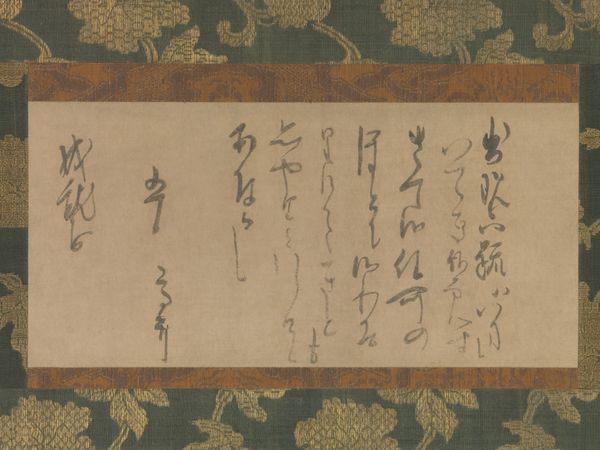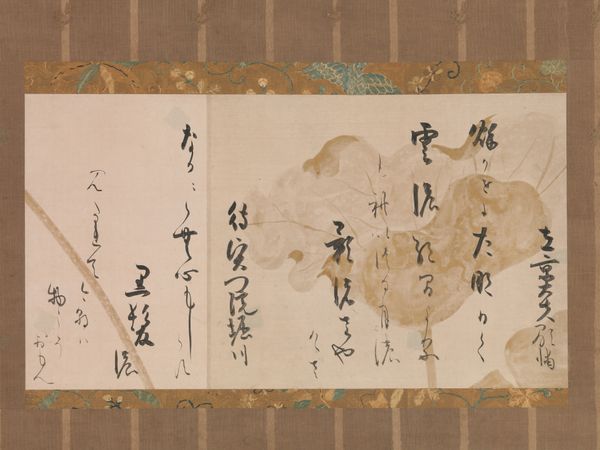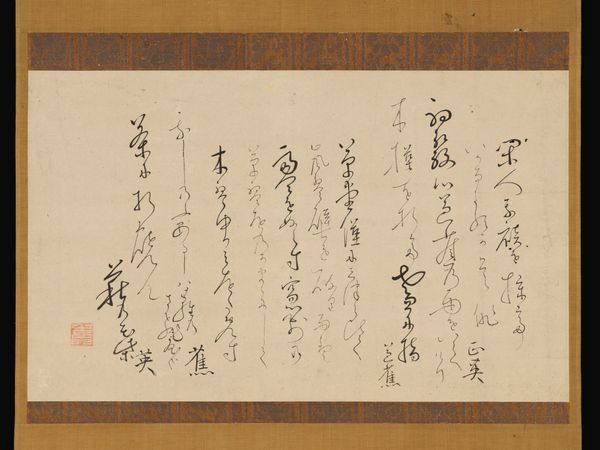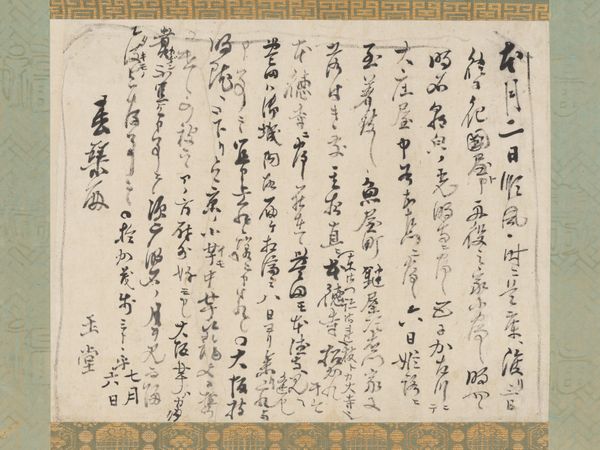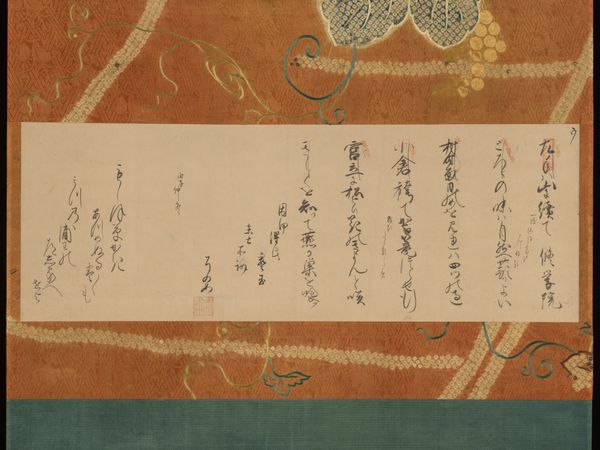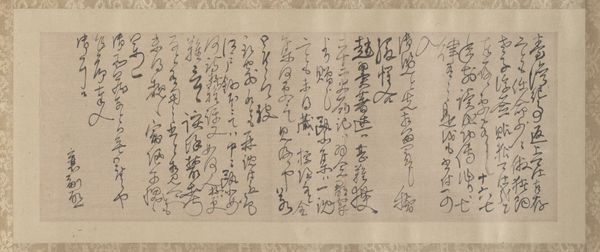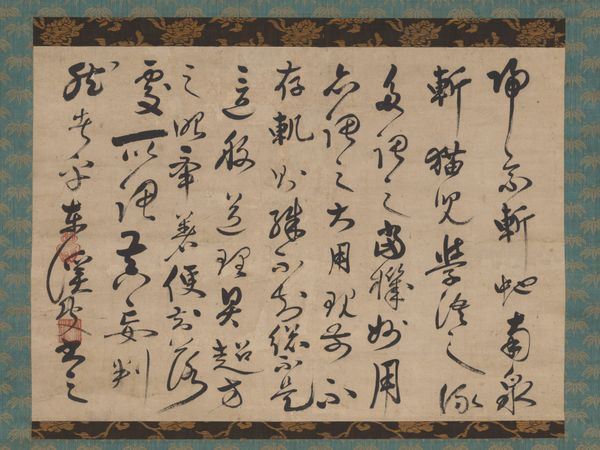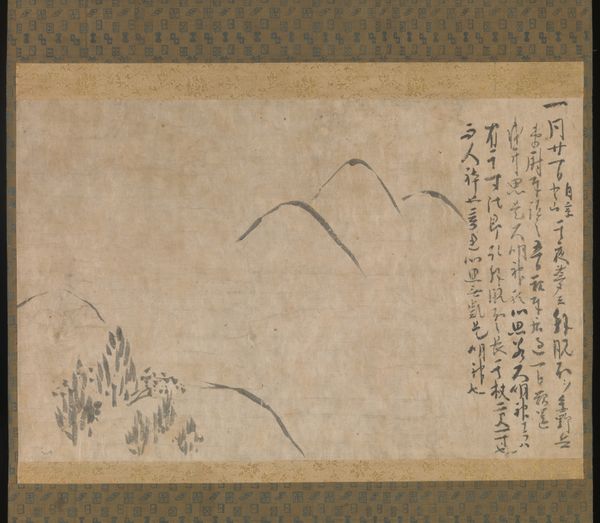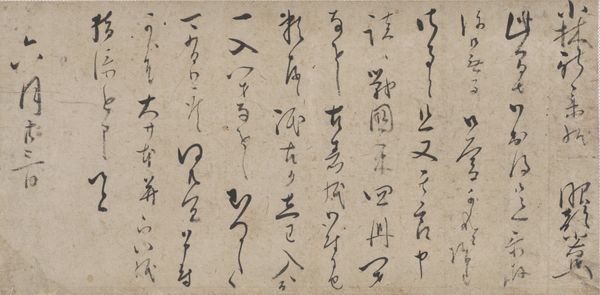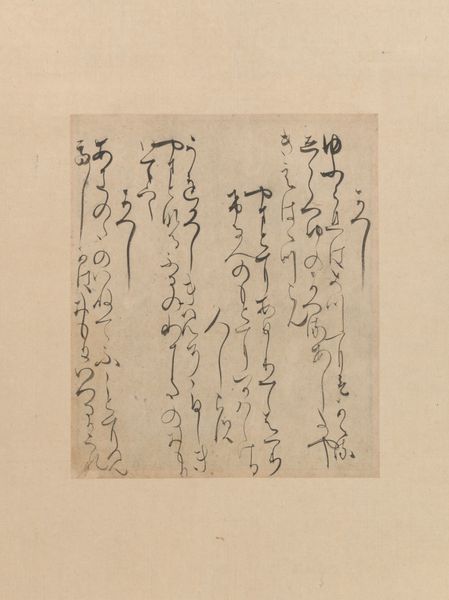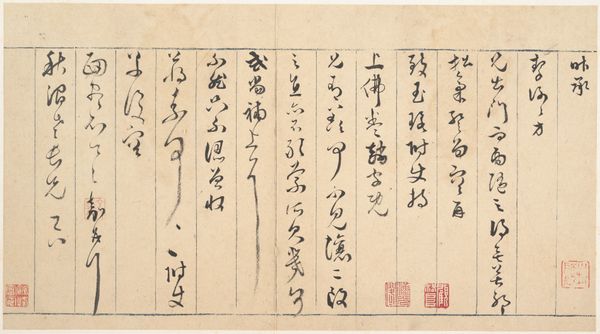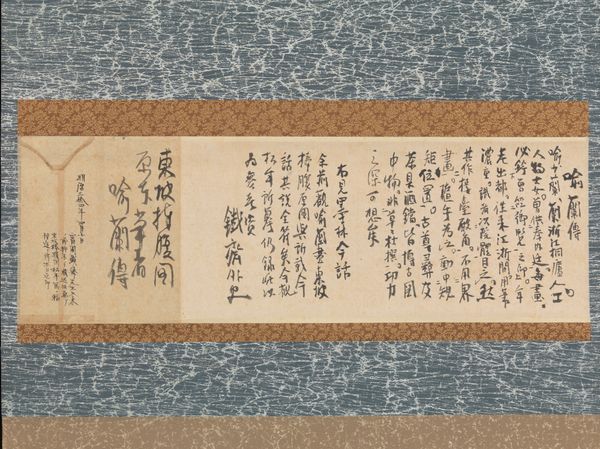
paper, ink
#
asian-art
#
paper
#
ink
#
coloured pencil
#
calligraphy
Dimensions: Image: 12 5/8 x 20 3/4 in. (32.1 x 52.7 cm)
Copyright: Public Domain
Curator: At first glance, there is a kind of subdued elegance to this work; the palette is so subtle, and the forms are so graceful. Editor: Exactly. The artwork here is "Autumn Poem by Lady Kunaikyō", made between 1624 and 1626. It comes to us from the hand of Hon'ami Kōetsu, an early Edo period artist, working with ink on paper. It is currently housed in the Metropolitan Museum of Art. What captivates me most is its cultural significance. Curator: Tell me more; but first, look at the tonal relationships between the cream of the paper, the black lines and the darker bamboo image—such subtlety is wonderful. But okay, go on. What is its cultural footprint? Editor: Well, calligraphy wasn't just about pretty handwriting. The physical act of creation here was about skill and training, literacy, and privileged education; so ownership of one these shows status and gives political power. Plus, it connects the artist and owners with a shared, refined aesthetic. Curator: Ah, yes. It is so much more than the materiality. However, back to basics; just looking at it as an art object, I'm drawn to the texture of the paper, almost a fabric, really—you can almost feel its gentle roughness. But is this drawing or script, or poem? I lose sight of which is primary… Editor: Both! It exemplifies what’s termed *tsugigami* – joined papers, with poem fragments by different poets brushed onto sections decorated with underdrawings. There is collaboration embedded here! Curator: Interesting. The placement of the text, like stars, strewn across a firmament. Did you note the material components in relation to the act of literary consumption here? A commodified form for displaying power—all those resources devoted to what is now, really, decoration. Editor: It challenges traditional boundaries between decorative and ‘high’ art. Yet also, in the balance of forms, there is an echo of permanence amidst the poem's implied themes of autumn, age and passing… the work whispers of inevitable change. Curator: Yes, seeing that balance, I am now wondering if this piece doesn’t only invite reflection but subtly critiques the temporal nature of power itself.
Comments
No comments
Be the first to comment and join the conversation on the ultimate creative platform.
